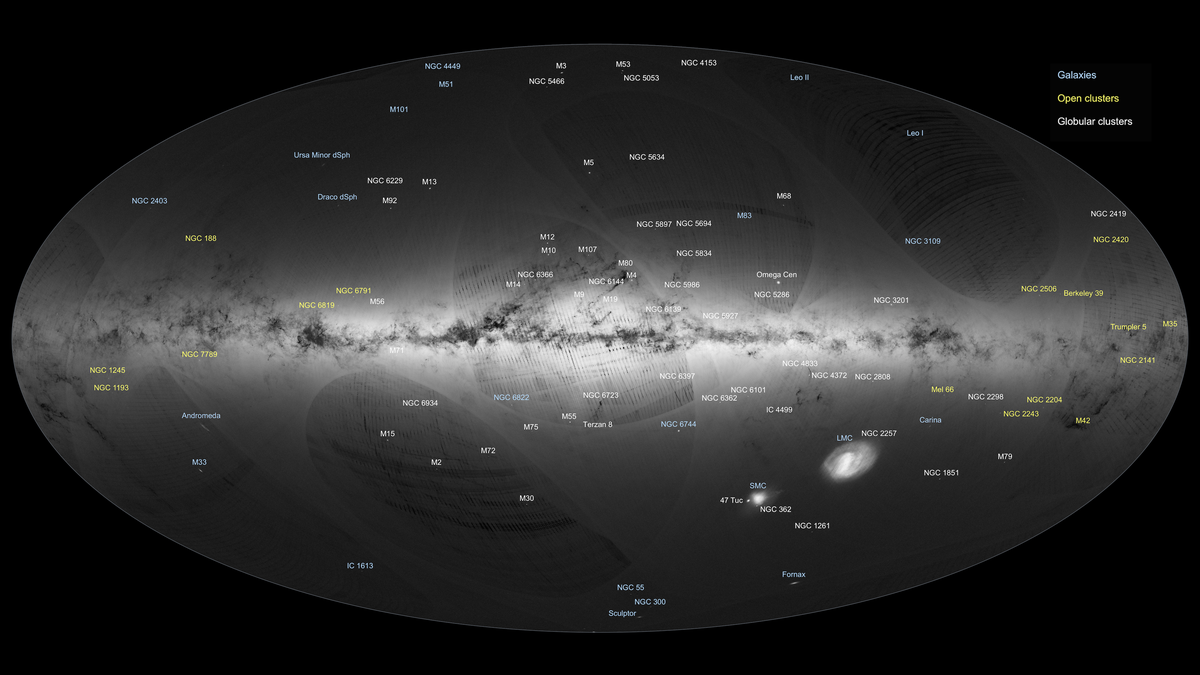
Gaia’s first sky map, annotated (ESA/Gaia/DPAC)
A stunning and vast map of the cosmos has been published by the European Space Agency (ESA), showing over one billion stars in the Milky Way and beyond.
The map represents “the largest all-sky survey of celestial objects to date” the ESA said.
A spacecraft called Gaia collected the information over more than a year, from July of last year to September, 2016.
“The beautiful map we are publishing today shows the density of stars measured by Gaia across the entire sky, and confirms that it collected superb data during its first year of operations,” Timo Prusti, Gaia project scientist at ESA, said in a statement.
The map shows the locations of more than 1.1 billion stars, as well as features like open clusters, globular clusters, and even other galaxies like the Large Magellanic Cloud, Small Magellanic Cloud, and Andromeda. The middle of the image shows the horizontal plane of the Milky Way, our own galaxy.
The ESA said that Gaia will eventually assemble “the most detailed 3D map ever made of our Milky Way galaxy” and that what it has already created is two times as precise as the previous best catalogue of the stars.
“Gaia is at the forefront of astrometry, charting the sky at precisions that have never been achieved before,” Alvaro Giménez, ESA’s Director of Science, said in the statement.
High-resolution images of the map-- both annotated and not-- are available for download via the ESA.
Follow Rob Verger on Twitter: @robverger
An earlier version of this article mistated the names of the Large and Small Magellanic Clouds as the Large and Small Magnetic Clouds.